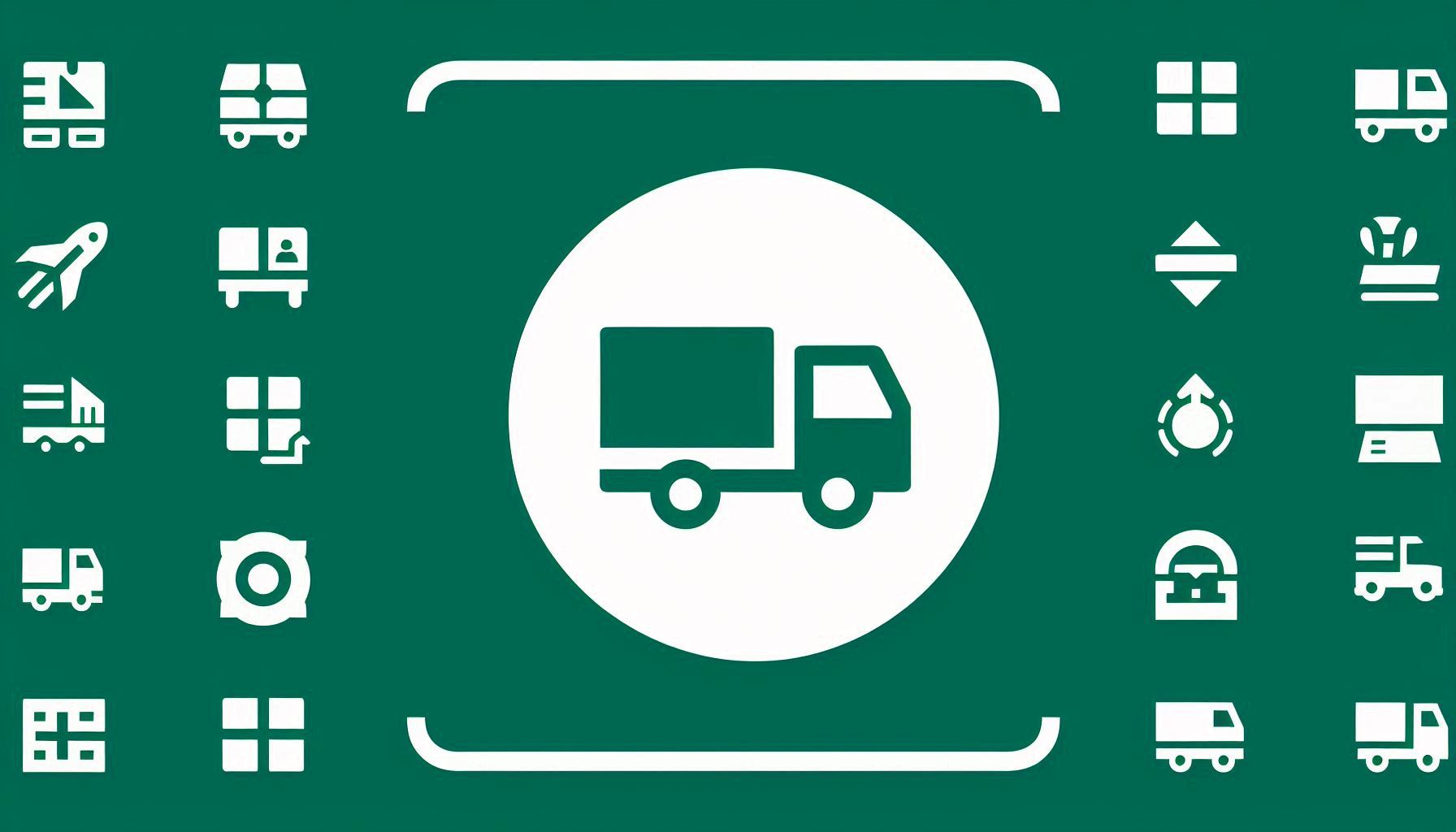Emissions to Air in a Seaport – An Approach to Modelling, Quantification and Reduction

Downloads
Emission sources associated with port operations are very different and ports are obliged to develop adequate responses. After a general introduction, an overview on literature related to emissions to air in ports and summary of already implemented responses (solutions) on port related emissions, the interdependency between the quantity of CO2 emitted by mobile harbour cranes during loading process of vessels is modelled, implementing the multiple regression model. Parameters of the model show that 88.53% of the variability of the quantity of the emitted CO2 to air per vessel depends on selected independent variables. Results presented in this paper enable recognition of some directions of reduction of CO2 emissions to air by the cargo handling equipment in a port. Furthermore, a planning tool purposed for quantification and forecasting CO2 emissions from cargo handling equipment in a port, based on a group of relevant parameters, is proposed. In that context, the influence of variations in productivity in the cargo handling process on the quantity of CO2 emitted to air is analysed. The proposed approach can be implemented in other ports where the diesel-powered cargo handling equipment is in use. In addition, the presented results can be a reliable base for further engagement of the author in this domain.
Downloads
ESPO. Port investment study 2024, The investment pipeline and challenges of European ports. https://www.espo.be/media/ESPOPortInvestmentsStudy2024.pdf [Accessed 11th Jan. 2024].
Investor report - Unlocking the potential of the blue economy, European Union, 2023. https://blueinvest-community.converve.io/upload/fck/file/Report_Blue_Invest_FINAL_7march-compressed.pdf [Accessed 12 Jan. 2024].
Verschuur J, Koks EE, Hall JW. Ports’ criticality in international trade and global supply-chains. Nature Communication. 2022;13. DOI: 10.1038/s41467-022-32070-0.
Mudronja G, Jugović A, Škalamera-Alilović D. Seaports and economic growth: panel data analysis of EU Port Regions. Journal of Marine Science and Engineering. 2020;8(12), 1017. DOI: 10.3390/jmse8121017.
Munim ZH, Schramm HJ. The impacts of port infrastructure and logistics performance on economic growth: The mediating role of seaborne trade. Journal of Shipping and Trade. 2018;3(1). DOI: 10.1186/s41072-018-0027-0.
Dwarakisha GS, Salima AM. Review on the role of ports in the development of a nation. Aqautic Procedia. 2015;4:295 – 301. DOI:10.1016/j.aqpro.2015.02.040.
Somu R, et al. The role of seaports in regional development in the East Coast of Peninsular Malaysia: An evaluation through an exploratory factor analysis. Journal of Transport and Supply Chain Management. 2022;16. DOI: 10.4102/jtscm.v16i0.617.
Tareq AM, Shaikh MA, Sen S, Xuefeng W. Deep sea port and the national development: Perspective of Bangladesh, International Journal of Engineering and Management Research. 2020;10(6):73-80. http://dx.doi.org/10.2139/ssrn.3775408.
Çaglak SB, Aydin G, Alkan G. The impact of seaports investments on regional economics and development. International Journal of Business and Management Studies. 2011;3(2):333-339. https://dergipark.org.tr/tr/download/article-file/255967 [Accessed 22nd Jan. 2024].
Ukić Boljat H, Vilke S, Grubišić N, Maglić L. Application of multi-criteria analysis for the introduction of green port management practices: an evaluation of energy efficient mobility in nautical ports. Scientific Journal of the Maritime University. of Szczecin. 2021;65(137):72–12. https://bibliotekanauki.pl/articles/1818877 [Accessed 28th Jan. 2024].
Haezendonck E. Port strategy for sustainable development. Sustainable – Special Issue. 2022. DOI: 10.3390/books978-3-0365-0091-1.
Zhang X. Port development model based on low-carbon economy. International Core Journal. of Engineering. 2020;6(10):160-170. DOI: 10.6919/ICJE.202010_6(10).0024.
Lloyd`s register. Global maritime trends 2050. 2023. https://www.lr.org/en/knowledge/research-reports/global-maritime-trends-research-programme/ [Accessed 22nd May 2024].
Ghennaï A, Said Madani S, Hein C. Evaluating the sustainability of scenarios for port city development with Boussole21 method. Environment Systems and Decisions. 2023;43:87–107. DOI: 10.1007/s10669-022-09869-9.
Pham TY. A smart port development: Systematic literature and bibliometric analysis. The Asian Journal of Shipping and Logistics. 2023;39:57-63. DOI: 10.1016/j.ajsl.2023.06.005.
Amrullah RA, et al. Waste pollution and pollution prevention in Tnajung Priok Port with Green Port Program, Journal Maritim Malahayati. 2023;4(2). DOI: 10.70799/jumma.v4i2.57.
European Commission. COM/2020/789 final sustainable and smart mobility strategy. 2020. https://eur-lex.europa.eu/legal-content/EN/TXT/?uri=CELEX:52020DC0789 [Accessed 22nd Feb. 2024].
European Commission. COM/2019/640 final European Green Deal. 2019. https://ec.europa.eu/info/strategy/priorities-2019-2024/european-green-deal/transport-and-green-deal_en. [Accessed 31st Jan. 2024].
https://sdgs.un.org/goals [Accessed 1st Feb. 2024].
www.epa.gov [Accessed 2nd Feb. 2024].
Merk O. Shipping Emissions in Ports. OECD, International transport forum, Paris, 2014. https://dx.doi.org/10.1787/5jrw1ktc83r1-en.
https://www.health.nsw.gov.au/environment/air/Pages/common-air-pollutants.aspx [Accessed 2nd Feb. 2024].
https://naei.beis.gov.uk/overview/ghg-overview [Accessed 2nd Mar. 2024].
Ritchie H, Roser M, Rosado P. Energy. https://ourworldindata.org/co2/country/montenegro [Accessed 3rd Mar. 2024].
The EU in 2023 – General report on the activities of the European Union, European Commission, 2024. https://op.europa.eu/en/publication-detail/-/publication/ea6b0987-dd66-11ee-b9d9-01aa75ed71a1/language-en [Accessed 21st Mar. 2024].
Barbaglia L, Fatica S, Rho C. Flooded credit markets: Physical climate risk and small business lending, JRC Working Papers in Economics and Finance, 2023/14, European Commission, Joint Research Centre, 2023. https://publications.jrc.ec.europa.eu/repository/handle/JRC136274 [Accessed 12th Mar. 2024].
Crippa M et al. GHG emissions of all world countries, Publications office of the European Union, Luxembourg, 2023, doi:10.2760/953322, JRC134504.
Greene S, Lewis A. Smart Freight Centre. Global Logistics Emissions Council Framework for Logistics Emissions Accounting and Reporting, 2019. https://www.smartfreightcentre.org/en/our-programs/global-logistics-emissions-council/calculate-report-glec-framework/ [Accessed 13th Mar. 2024].
Moss M, Eyton E, Shakeel H, Wan J. How the green deal call-funded projects are tackling mobility aspects of the Fit for 55 proposals – Report Four, European Commission, 2024. DOI:10.2777/141100.
Decoding maritime emissions, a global container vessel emissions report, 2023. www.vesselbot.com [Accessed 18th Mar. 2024].
Alzahrani A, Petri I, Rezgui Y, Ghoroghi, A. Decarbonisation of seaports: A review and directions for future research. Energy Strategy Review. 2021;38:100727. DOI: 10.1016/j.esr.2021.100727.
Marques KSdaS, Palmeira AdaS, Nascimento EGS, Moreira DM. Study of NOx and CO2 emissions from maritime transport in the Port of Salvador, Bahia, Brazil. VII International Symposium on Innovation and Technology (SIINTEC) One Planet, one Ocean and one Health, 2021. https://pdf.blucher.com.br/engineeringproceedings/siintec2021/208373.pdf [Accessed 15th Mar. 2024].
Sánchez RJ, Barleta EP, Di Domenico SS, Sabonge R. Towards the decontamination of maritime transport in international trade: methodology and estimation of CO2 emissions. Bulletin. 2019;373(5). https://repositorio.cepal.org/handle/11362/45076 [Accessed 24th Mar. 2024].
Azarkamand S, Ferré G, Darbra RM. Calculating the carbon footprint in ports by using a standardized tool. Journal Science of the Total Environment. 2020;734:139-407. DOI: 10.1016/j.scitotenv.2020.139407.
Erbach G, Jensen L. Fit for 55 package, EPRS | European Parliamentary Research Service, 2022. https://www.europarl.europa.eu/RegData/etudes/BRIE/2022/733513/EPRS_BRI(2022)733513_EN.pdf [Accessed 29th Mar. 2024].
https://www.smartfreightcentre.org/en/our-programs/global-logistics-emissions-council/calculate-report-glec-framework [Accessed 12th Mar. 2024].
https://www.iso.org/en/contents/news/2023/01/a-net-zero-logistics-sector.html [Accessed 24th Mar. 2024].
Hadwick A. The state of European supply chain, Reuters events, 2024. https://1.reutersevents.com/ [Accessed 24th Mar. 2024].
Wild P. Recommendations for a future global CO2-calculation standard for transport and logistics. Transportation Research, Part D. 2021; 100:103024. https://www.sciencedirect.com/science/article/pii/S1361920921003229 [Accessed 11th Mar. 2024].
Janowicz K, Pauling J. Risk assessment, management, and mitigation for port and marine terminals projects, 2016. https://aapa.files.cms-plus.com/SeminarPresentations/2016Seminars/2016CargoOptimization/Kat%20J.pdf [Accessed 31st Mar. 2024].
International association of ports and harbors (IAPH). Risk and Resilience Guidelines for Ports. https://sustainableworldports.org/wp-content/uploads/IAPH-Risk-and-Resilience-Guidelines-for-Ports-BD.pdf [Accessed 30th Mar. 2024].
Alyami H, et al. An advanced risk analysis approach for container port safety evaluation, Maritime Policy & Management, Journal of International Shipping and Port Research. 2014;41:634-650. DOI: 10.1080/03088839.2014.960498.
Sihem S, Robert N. Port risk assessment in container terminals: The case of Tunisia. International Journal of Transport Development and Integration. 2020;4(1):42–50. DOI: 10.2495/TDI-V4-N1-42-50.
Pallis PL. Port risk management in container terminals, Transportation Research Procedia. 2017;25: 4411–4421. DOI:10.1016/j.trpro.2017.05.337.
Hudson trident maritime security management, risk assessment factors in port security, 2019. https://portalcip.org/wp-content/uploads/2019/08/9-Assessing-Risk-and-Port-Security-05062019.pdf [Accessed 1st Apr. 2024].
ESPO Environmental Report 2023, EcoPortsinSights2023, 2023. https://www.espo.be/media/ESPO%20Environmental%20Report%202023.pdf [Accessed 25th Mar. 2024].
European climate risk assessment, chapter 1 (Contributing: Marc Zebisch (EURAC)), European Environment Agency, 2024. https://www.eea.europa.eu/publications/european-climate-risk-assessment/european-climate-risk-assessment-report-unedited/view [Accessed 5th Mar. 2024].
https://joint-research-centre.ec.europa.eu/jrc-news-and-updates/climate-related-financial-risks-are-major-challenge-2024-03-12_en?pk_source=ec_newsroom&pk_medium=email&pk_campaign=jrc_newsletter_march [Accessed 30th Mar. 2024].
European Commission. COM(2024) 91 final, Communication from the Commission to the European Parliament, The Council, The European Economic and Social Committee and the Committee of the Regions, Managing climate risks - protecting people and prosperity, 2024. https://climate.ec.europa.eu/document/download/b04a5ed8-83da-4007-9c25-1323ca4f3c92_en?filename=communication_on_managing_climate_risks_en.pdf [Accessed 30th Mar. 2024].
https://joint-research-centre.ec.europa.eu/jrc-news-and-updates/decrypting-financial-risks-climate-change-and-biodiversity-loss-2023-12-18_en?pk_source=ec_newsroom&pk_medium=email&pk_campaign=jrc_newsletter_december [Accessed 11st Mar. 2024].
Panaro A, Buonfanti AA. The role of ports as energy hubs and their Impact on Mediterranean maritime relations, p: 46-58. In Policy study: Infrastructures, Energy and Digitalization: Pillars for the Sustainble Development of Transport in the Western Mediterranean. Centre for Transportation Studies for the Western Mediterranean (CETMO) and European Institute of the Mediterranean (IEMed), 2024. https://www.iemed.org/wp-content/uploads/2024/02/Policy-Study-8-CETMO-paper.pdf [Accessed 2nd Apr. 2024].
UNCTAD. UNCTAD Rapid assessment: Navigating troubled waters – Impact to global trade of disruption of shipping routes in the Red Sea, Black Sea and Panama Canal, 2024. https://unctad.org/publication/navigating-troubled-waters-impact-global-trade-disruption-shipping-routes-red-sea-black [Accessed 13th Apr. 2024].
Bergqvist R, Monios J. Green ports in theory and practice, In. Green Ports / Chapter 1., Elsevier Inc. 2019. DOI: 10.1016/B978-0-12-814054-3.00001-3 [Accessed 3rd Apr. 2024].
GEF-UNDP-IMO GloMEEP Project and IAPH, Port Emissions Toolkit, Guide No.1, Assessment of port emissions, 2018. https://greenvoyage2050.imo.org/wp-content/uploads/2021/01/PORT-EMISSIONS-TOOLKIT-GUIDE-NO.1-ASSESSMENT-OF-PORT-EMISSIONS.pdf [Accessed 5th Apr. 2024].
Cozzi A. European territorial cooperation for green and smart ports the SUSPORT, EALING, DIGSEA AND ACCESSMILE PROJECTS. https://ealingproject.eu/wp-content/uploads/2023/06/Cozzi_21.06.2023.pdf [Accessed 5th Apr. 2024].
Zhang Y, et al. Air emission inventory of container ports’ cargo handling equipment with activity-based ‘‘bottom-up’’ method, Advances in Mechanical Engineering. 2017;9(7):1-9. DOI: 10.1177/1687814017711389.
Cofala J et.al. The potential for cost-effective air emission reductions from international shipping through designation of further emission control areas in EU waters with focus on the Mediterranean Sea –Final report, IIASA, Austria. 2020. https://platformduurzamebiobrandstoffen.nl/wp-content/uploads/2020/04/2018_IIASA_The-potential-for-cost-effective-air-emission-reduction-international-shipping.pdf [Accessed 8th Apr. 2024].
Knežević V, Pavin Z, Čulin J. Estimating shipping emissions – A case study for cargo Port of Zadar, Croatia, The International Journal on Marine Navigation and Safety of Sea Transportation. 2021;15(3). DOI: 10.12716/1001.15.03.16.
Kirchner S. Marine Pollution: B. Vessel source pollution. Yearbook of International Environmental Law. 2021; 32(1):69-72. DOI:10.1093/yiel/yvac011.
Roy WV et al. Assessment of the effect of international maritime regulations on air quality in the Southern North Sea. Atmosphere. 2023;14(6):969. DOI: 10.3390/atmos14060969.
Wan Z, Zhu M, Chen S, Sperling D. Pollution: Three steps to a green shipping industry, Nature. 2016;530:275–277. DOI:10.1038/530275a.
Toscano D. The impact of shipping on air quality in the port cities of the Mediterranean Area: A review. Atmosphere. 2023;14(7):1180. DOI:10.3390/atmos14071180.
Wangari-Muriithi A. A case study of the implementation and enforcement of MARPOL Annex VI sulphur regulations in Kenya, The Maritime Commons: Digital Repository of the World Maritime University World Maritime University Dissertations, 2019. https://commons.wmu.se/cgi/viewcontent.cgi?article=2121&context=all_dissertations [Accessed 18th Apr. 2024].
Chettri A. The Influence of MARPOL Annex VI on global ship emission: A study based on the impact in the ECAs, Master Thesis, University of South-Eastern Norway - Faculty of Technology, Natural Sciences, and Maritime Sciences, 2019.https://openarchive.usn.no/usn-xmlui/bitstream/handle/11250/2637942/Ashwin%20Chettri%20Master%20Thesis.pdf?sequence=1 [Accessed 10th Apr. 2024].
Khalikov S, Smailkhan A, Nukuyeva K. How can environmental pollution by ships be minimized at the New Terminal of cargo offloading Facility of the Caspian Sea? Journal of Geoscience and Environment Protection. 2020;8(1). DOI:10.4236/gep.2020.81003.
Hoque R. Md Saiful Karim, Prevention of pollution of the marine environment from vessels - The potential and limits of the International Maritime Organisation. Yearbook of International Environmental Law, 2014, 25(1):642-645. DOI:10.1093/yiel/yvv067.
Bratić K, Stazić L, Vukičević M, Lalić B. Cruise vessels air pollution inventory for the Port of Kotor, Transactions on Maritime Science. 2021;1:1-8. DOI: 10.7225/toms.v10.n01.016.
Dragovic B, et al. Ship emissions and their externalities in cruise ports, Transportation Research, Part D. 2015; 61(6). DOI:10.1016/j.trd.2015.11.007.
Rodríguez GdeM, Alcaldea EM, Murcia-González JC, Saurí S. Evaluating air emission inventories and indicators from cruise vessels at ports. WMU Journal of Maritime Affairs. 2017;16(3). DOI:10.1007/s13437-016-0122-8.
Azarkamand S, Wooldridge C, Darbra RM. Review of initiatives and methodologies to reduce CO2 emissions and climate change effects in ports. International Journal of Environmental Research and Public Health. 2020;17:3858. DOI:10.3390/ijerph17113858.
Islam MR, Aziz MG, Khan MB. Strategies to reduce carbon footprint in port and terminal operations: evidence from a developing country. Journal of Agroforestry and Environment. 2022;15(1). DOI:10.55706/jae.
Dey A, Amin MA, Akther A. Air emissions from in-land activities of Chittagong Port of Bangladesh. Journal of Fundamental and Applied Science. 2020;12(1):434-448, https://www.jfas.info/index.php/JFAS/article/view/606 [Accessed 11th Apr. 2024].
Milošević T, et al. Air pollution dispersion modelling in port areas. Pomorski Zbornik, Posebno izdanje. 2020:157-170. DOI: 18048/2020.00.12.
Port of Oakland 2015. Seaport air emissions inventory, Final Report, Ramboll Environ, 2016, https://www.portofoakland.com/files/PDF/Port%20of%20Oakland%202015%20Seaport%20Emissions%20Inventory%20Final-11Oct2016.pdf [Accessed 21st Apr. 2024].
Šimenc M. Overview and comparative analysis of emission calculators for inland shipping. International Journal of Sustainable Transport. 2016;10:627-637. DOI: 10.1080/15568318.2015.1079753.
Paulauskas V, Filina-Dawidowicz L, Paulauskas D. The method to decrease emissions from ships in port areas. Sustainability. 2020;12(11):4374. DOI:10.3390/su12114374.
Murena F, Prati MV, Quaranta F. Assessment of the impact of ship emissions on the air quality in Naples. Maritime Transportation and Harvesting of Sea Resources – Guedes Soares & Teixeira, Taylor & Francis Group, London, 2018. https://www.iris.unina.it/retrieve/e268a72e-d6f2-4c8f-e053-1705fe0a812c/Murena%2C%20Prati%2C%20Quaranta%20-%20Assessment%20of%20the%20impact%20of%20ship%20emissions%20on%20the%20air%20quality%20in%20Naples.pdf [Accessed 25th Apr. 2024].
Trozzi C, Vaccaro R. Air pollutant emissions from ships: High Tyrrhenian Sea ports case study. Transaction on the Built Environment. 1998;36:243-252. https://www.witpress.com/Secure/elibrary/papers/MAR98/MAR98023FU.pdf [Accessed 27th Apr. 2024].
Na JH, Choi AY, Ji J, Zhang D. Environmental efficiency analysis of Chinese container ports with CO2 emissions: An inseparable input-output SBM model. Journal of Transport Geography. 2017;65(C):13-24. DOI: 10.1016/j.jtrangeo.2017.10.001 [Accessed 17th Apr. 2024].
Chang YT. Environmental efficiency of ports: A data envelopment analysis approach. Maritime Policy and Management. 2013;40:467-478. DOI:10.1080/03088839.2013.797119.
Issa Zadeh SB, et al. A framework for accurate carbon footprint calculation in seaports: Methodology proposal. Journal of Marine Science and Engineering. 2023;11(5):1007. DOI:10.3390/jmse11051007.
Mamatok Y, Jin C. An integrated framework for carbon footprinting at container seaports: the case study of a Chinese port. Maritime Policy and Management. 2017;44(2):208-226. DOI: 10.1080/03088839.2016.1262077.
Villalba G, Gemechu ED. Estimating GHG emissions of marine ports—the case of Barcelona. Journal Energy Policy. 2011;31(3):1363 – 1368. DOI:10.1016/j.enpol.2010.12.008.
Teerawattana R, Yang YC. Environmental performance indicators for green port policy evaluation: Case study of Laem Chabang Port. The Asian Journal of Shipping and Logistics. 2019;35(1):063-069. https://www.sciencedirect.com/science/article/pii/S2092521219300094 [Accessed 5 Apr. 2024].
Bui VD, Nguyen HP, Nguyen XP. Optimization of energy management systems in seaports as a potential strategy for sustainable development. Journal of Mechanical Engineering Research and Development. 2021;44(8):19-30. https://jmerd.net/Paper/Vol.44,No.8(2021)/19-30.pdf [Accessed 18th Apr. 2024].
Moss M, Eyton E, Shakeel H, Wan J. How the green deal call-funded projects are tackling mobility aspects of the fit for 55 proposals – Report four, European Commission, 2024. DOI:10.2777/141100.87.
https://sciencebusiness.net/viewpoint/green-technology/viewpoint-european-industry-needs-certainty-over-forever-chemicals-ban?utm [Accessed 22nd Apr. 2024].
Department for Transport. Port Air Quality Strategies, London, 2019. www.gov.uk/dft [Accessed 20th Apr. 2024].
Narusu S. IAPH'S Initiatives to reduce emissions from ports. Multi-year Expert Meeting on Transport, Trade Logistics and Trade Facilitation Sustainable Freight Transport Systems: Opportunities for Developing Countries, International Association of Ports and Harbors (IAPH), 2015. https://unctad.org/system/files/non-official-document/Susumu%20NARUSE.pdf [Accessed 20th Apr. 2024].
Han CH. Air pollution reduction strategies of world major ports, The International Commerce & Law Review. 2010; 48. https://www.researchgate.net/publication/267868466_Air_Pollution_Reduction_Strategies_of_World_Major_Ports [Accessed 30th Apr. 2024].
https://baltictransportjournal.com/index.php?id=2987 [Accessed 1st June 2024].
https://baltictransportjournal.com/index.php?id=2986 [Accessed 1st June 2024].
https://www.informare.it/news/gennews/2024/20240612-ECSA-bene-obiettivo-UE-produzione-40pc-fuel-puliti-shippinguk.asp [Accessed 6th May 2024].
Gkonis K. Know the differences to make a difference. Baltic Transport Journal. 2024;1:44-45. https://baltictransportjournal.com/index.php?id=3105 [Accessed 6th June 2024].
Puccio L, Qvist L. ECSA priorities for 2024 – 2029, European community shipowners’ associations, 2024. https://www.ecsa.eu/sites/default/files/publications/ECSA%20PRIORITIES%202024-2029_0.pdf [Accessed 7th June 2024].
European maritime safety agency, EMSA Outlook 2024, 2024. https://mcusercontent.com/e792eb666c5525313f6a06f52/files/020acd3d-582a-5fb2-7fc2-7c36bd7aca26/EMSA_Outlook_2024.pdf [Accessed 10th June 2024].
Global maritime forum, Oceans of opportunity, Supplying green methanol and ammonia at ports, 2023. https://cms.globalmaritimeforum.org/wp-content/uploads/2024/04/Oceans-of-opportunity_supplying-green-methanol-and-ammonia-at-ports.pdf [Accessed 11th June 2024].
DNV, Energy transition outlook 2023, Maritime forecast to 2050. 2024. https://brandcentral.dnv.com/original/gallery/10651/files/original/ [Accessed 1st June 2024].
International energy agency, Global hydrogen review 2023. 2024. https://iea.blob.core.windows.net/assets/ecdfc3bb-d212-4a4c-9ff7-6ce5b1e19cef/GlobalHydrogenReview2023.pdf [Accessed 3rd June 2024].
https://seanergyproject.eu/news/what-are-zero-emissions-vessels/ [Accessed 26th May 2024].
https://www.powerprogress.com/news/damen-launches-fully-electric-tug-for-belgium-port/8037096.article [Accessed 16th May 2024].
https://baltictransportjournal.com/index.php?id=3165 [Accessed 16th June 2024].
Aktas B. The holy boss cap. Baltic Transport Journal. 2024;2:62-63. https://baltictransportjournal.com/index.php?id=3172 [Accessed 22nd June 2024].
Bulk carrier owners stressed by EU’s green deal, Hellas Maritime Report 2023, Seatrade Informa Group, 2023. https://cloud.3dissue.net/41368/41155/42884/103314/Hellas23%20combined%20de-20231127155125.pdf [Accessed 28th May 2024].
Karimpour R, et al. EALING project, Deliverable D1.2 Report on final recommendations for a harmonised framework on OPS in EU ports. https://ealingproject.eu/wp-content/uploads/2023/02/EALING_Deliverable-D1.2.pdf [Accessed 31st May 2024].
EALING - European flagship action for cold ironing in ports, Ports Questionnaire, 2022. https://ealingproject.eu/wp-content/uploads/2022/05/Port-Questionnaires-Executive-Summary.pdf [Accessed 31st May 2024].
https://www.euronews.com/my-europe/2024/04/29/ports-in-baltic-sea-slash-co2-with-novel-maritime-traffic-system [Accessed 30th Apr. 2024].
https://cinea.ec.europa.eu/news-events/news/transport-infrastructure-over-eur-424-million-eu-funding-boost-zero-emission-mobility-2024-04-10_en [Accessed 15th Apr. 2024].
REDII Ports project, Interreg North Sea. https://www.interregnorthsea.eu/redii-ports [Accessed 20th May 2024].
Ivy A. Can a single maritime artificial intelligence (AI) research project cut 1% of total global emissions? Baltic Transport Journal. 2024;1:79-80. https://baltictransportjournal.com/index.php?id=3105 [Accessed 6th June 2024].
EALING project. Deliverable D2.2 Report on the identification of the relevant technical and regulatory elements to facilitate adaptation and connectivity of ships to Shore Side Electricity (SSE). EALING is co-funded by the European Commission, Connecting Europe Facility (CEF) programme under grant agreement No INEA/CEF/TRAN/M2019/2089031. https://ealingproject.eu/wp-content/uploads/2023/11/EALING_D2.2_Finalised.pdf [Accessed 29th May 2024].
Port of Bar, Documentation of the Development Department, 2023.
Awal ZI, Abdullah A. Multiple linear regression model for ship repair time estimation, Proceedings from the 12TH International conference on Marine Technology MARTEC. 2020. http://zobair.buet.ac.bd/ [Accessed 25th May 2024].
Stepec D, et.al. Machine learning based system for vessel turnaround time prediction, Proceedings from the Conference: 2020 21st IEEE International Conference on Mobile Data Management (MDM), 2020. DOI:10.1109/MDM48529.2020.00060.
Aiyetan AO, Smallwood JJ, Shakantu W. A linear regression modelling of the relationship between initial estimated and final achieved construction time in South Africa. Journal Acta Structilia. 2012; 19(1). DOI: 10.38140/as.v19i1.121 [Accessed 25th Mar. 2024].
Lee HT, Yang H, Cho IS. Data-Driven analysis for safe ship operation in ports using quantile regression based on generalized additive models and deep neural network. Sensor. 2021;21(24): 8254; DOI:10.3390/s21248254.
Ilic Dj, Mijailovic S. Regression analysis of parameters in the improvement of decision making processes, Business Trends. 2014;II(4):25-32. DOI:10.5937/TrendPos1402025I.
Borucka A. Logistic regression in modelling and assessment of transport services. Open Engineering. 2020;10(1):26-34. DOI: 10.1515/eng-2020-0029.
Popovic B, Popovic PM. Statististical modelling (in Serbian: Statisticko modeliranje), University of Nis, Nis, 2018. https://www.pmf.ni.ac.rs/download/IZDANJA-KNJIGA-PMF_2/matematika/knjiga1-1.pdf [Accessed 1st Apr. 2024].
Interpreting Regression Output, Princeton University Library, 2007. https://dss.princeton.edu/online_help/analysis/interpreting_regression.htm [Accessed 2nd Apr. 2024].
https://www.dictionary.com/e/average-vs-mean-vs-median-vs-mode/ [Accessed 3rd Apr. 2024].
Igushkin I, Shikhalev A, Vorontsov D. Student's t-table modification for the linear correlation coefficients estimation in the small samples cases. https://ieeexplore.ieee.org/document/9848663 [Accessed 4th Apr. 2024].
https://statisticsbyjim.com/regression/interpret-coefficients-p-values-regression [Accessed 10th Apr. 2024].
Government of Montenegro, Ministry of energy and mining. Report on realization of the energy production plan for 2023 (in Montenegrin: Izvjestaj o realizaciji energetskog bilansa za 2023), Podgorica, 2023. https://wapi.gov.me [Accessed 5th June 2024].
Al-Jafari MK, Altaee HHA.The role of labor productivity in reducing carbon emission utilizing the Method of Moments Quantile Regression: evidence from top 40 emitter countries. International Journal of Economics and Finance. 2023;15(3). DOI:10.5539/ijef.v15n3p1.
Zhao M, et.al. Labour productivity and economic impacts of carbon mitigation: a modelling study and benefit–cost analysis. Lancet Planet Health. 2022; 6:e941–48. doi: 10.1016/S2542-5196(22)00245-5.
Bijnens G et.al. The impact of climate change and policies on productivity. European Central Bank, Occasional Paper Series No.340. https://www.ecb.europa.eu/pub/pdf/scpops/ecb.op340~0173592e52.en.pdf [Accesses 28th May 2024].
Simionescu M, et.al. GHG emissions mitigation in the European Union based on labor market changes. Energies. 2021;14(2):465. DOI:10.3390/en14020465.
Chavaillaz Y et.al. Exposure to excessive heat and impacts on labour productivity linked to cumulative CO2 emissions. Scinetific Reports. 2019;9:13711. DOI:10.1038/s41598-019-50047-w.
Matsumoto K, Tachiiri K, Su X. Heat stress, labour productivity, and economic impacts: analysis of climate change impacts using two-way coupled modelling, Environmental Research Communication. 2021;3:125001. DOI:10.1088/2515-7620/ac3e14.
Rigas N, Kounetas KE. The impact of CO2 emissions and climate on economic growth and productivity: International evidence, Review of Development Economics. 2024;28(2):719-740. DOI: 10.1111/rode.13075.
Zhang S et al. Impact of labor and energy allocation imbalance on carbon emission efficiency in China's industrial sectors. Renewable and Sustainble Energy Reviews. 2023;184:113586. DOI: 10.1016/j.rser.2023.113586.
Barrymore N, Sampson RC. ESG performance and labor productivity: exploring whether and when ESG affects firm performance, 2021. https://www.hbs.edu/faculty/Shared%20Documents/conferences/strategy-science-2021/ESG-Labor%202-28-21.pdf [Accessed 22nd May 2024].
Ville K. Labour productivity and development of carbon competitiveness industry-level evidence from Europe, ETLA Report, No. 139, The Research Institute of the Finnish Economy (ETLA), Helsinki, 2023. https://www.econstor.eu/bitstream/10419/274233/1/1854441922.pdf [Accessed 21st May 2024].
Day E, et al. Upholding labour productivity under climate change: An assessment of adaptation options. Climate Policy. 2019;19(3):367-385. DOI:10.1080/14693062.2018.1517640.
Chen X, Ma W, Valdmanis V. Can labour productivity growth reduce carbon emission? Evidence from OECD countries and China, Management of Environmental Quality. 2021;33(3). DOI:10.1108/MEQ-10-2021-0240.
Mulusew A, Hong M. A dynamic linkage between greenhouse gas (GHG) emissions and agricultural productivity: Evidence from Ethiopia. Humanities and Social Science Communication. 2024;11:52. DOI: 10.1057/s41599-023-02437-9.
Östblom G, Samakovlis E. Costs of climate policy when pollution affects health and labour productivity. A general equilibrium analysis applied to Sweden, Working Paper No. 93, The National Institute of Economic Research, Stockholm, 2004. https://www.konj.se/download/18.4ee9b512150ed5e093b906fe/1447246075392/Working-Paper-93-Costs-of-Climate-Policy-when-Pollution-Affects-Health-and-Labour-Productivity.-A-General-Equilibrium-Analysis-Applied-to-Sweden.pdf [Accessed 17th May 2024].
Park J. Will we adapt? Labor productivity and adaptation to climate change. Discussion Paper 2017-73. Harvard Environmental Economics Program, Harvard University, 2017. https://heep.hks.harvard.edu/files/heep/files/dp73_park.pdf [Accessed 12th May 2024].
Caldeira K, Brown PT. Reduced emissions through climate damage to the economy. PNAS. 2019;116(3):714–716. DOI: 10.1073/pnas.1819605116.
Bai S, Zhang B, Ning Y, Wang Y. Comprehensive analysis of carbon emissions, economic growth, and employment from the perspective of industrial restructuring: a case study of China. Environmental Science and Pollution Research. 2021;28:50767–50789. doi: 10.1007/s11356-021-14040-z.
Mitić P, Fedajev A, Radulescu M, Rehman A. The relationship between CO2 emissions, economic growth, available energy, and employment in SEE countries, Environmental Science and Pollution Research. 2023;30:16140–16155. doi: 10.1007/s11356-022-23356-3.
Vărzaru AA. Assessing agricultural impact on greenhouse gases in the European Union: A climate-smart agriculture perspective, Agronomy. 2024;14(4):821; DOI:10.3390/agronomy14040821.
Simas SM, Wood R, Hertwich EG. Labour embodied in trade: the role of labour and energy productivity and implications for Greenhouse Gas Emissions, Journal of Industrial Ecology. 2015;19(3):343-356. DOI:10.1111/jiec.12187.
Liu H, et al. Does economic development impact CO2 emissions and energy efficiency performance? Fresh Evidences From Europe. Frontiers in Energy Research. 2022; 10. DOI:10.3389/fenrg.2022.860427.
Ding X, Choi YJ. The impact of port total factor productivity on carbon dioxide emissions in port cities: Evidence from the Yangtze River Ports. AppliedScience. 2024;14(6):2406; DOI:10.3390/app14062406.
Zeng Y, Yuan X, Ho B. Analysis of carbon emission reduction at the port of integrated logistics: The port of Shanghai case study. Sustainability. 2023;15(14):10914; DOI:10.3390/su151410914.
Zanne M, Twrdy E. The economic feasibility of port air emissions reduction measures: The case study of the port of Koper. Economic and Business Review. 2021;23(3):141-151. DOI: 10.15458/2335-4216.1284.
https://www.iso.org/standards/ [Accessed 7th Oct. 2024].
Darbra RM, Journee H, Wooldridge CF. Environmental management tools for ports, 2012. https://upcommons.upc.edu/bitstream/handle/2117/22622/Darbra%20et%20al..pdf [Accessed 5th Oct. 2024].
Copyright (c) 2025 Deda ĐELOVIĆ

This work is licensed under a Creative Commons Attribution-NonCommercial 4.0 International License.




















